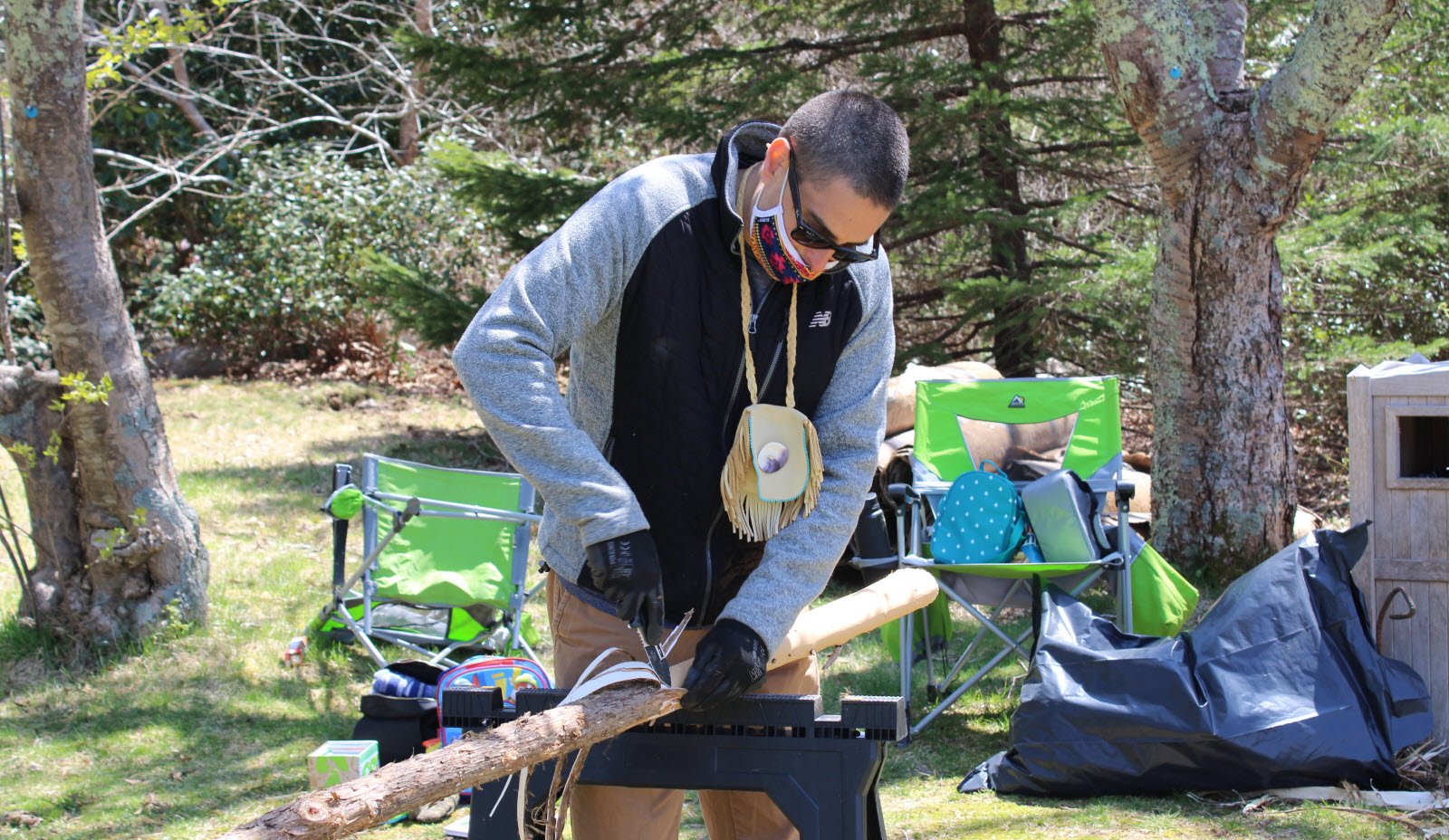Wampanoag Wetu
Heritage is a wonderful place to connect to the past. Visitors can stroll through our beloved rhododendrons, peruse the objects in our Special Exhibitions Gallery, marvel at the cars in our Automobile Collection, and even walk the gardens around our colonial-era Wing house, first constructed circa 1686. Our museums and collections speak to people who have lived before us, showcasing items of work, play, daily life, and art.
This year, we invite you to connect farther back with us. For more than 12,000 years this region has been inhabited by members of the Wampanoag Tribe, or “People Of The First Light.” We are delighted to have an opportunity to host part of their continued narrative through an immersive exhibit that showcases a replica Wampanoag home, known as a wetu. Later this summer, the wetu will be accompanied by a Wampanoag-style vegetable garden known as a Three Sisters Garden, consisting of corn, beans, and squash – vegetables that are proven to complement each other in their growth cycles. In collaboration with SmokeSygnals, and local Wampanoag leader, historian, and educator, Steven Peters, this wetu has been constructed by hand by members of the Mashpee Wampanoag Tribe using centuries-old methods. Steven Peters, Creative Director, SmokeSygnals, explains, “so much of our work has focused on bringing the Native experience to the public and this just feels like such an authentic way to achieve that goal. Delivering the structure will absolutely spark interest from visitors.”
Now that the wetu is complete, we invite you to read the interpretive panels explaining some of the context and construction methods of the wetu, and then to step inside to feel what it was like to live in one of these summer dwellings. We are excited to present this opportunity for visitors to learn more about the history of the people who have inhabited this area for centuries through this physical, multisensory experience of what it is like inside a traditional Wampanoag wetu. When you visit, these new interpretive materials will bring Native voices and stories, from the past and today, to our visitors.














